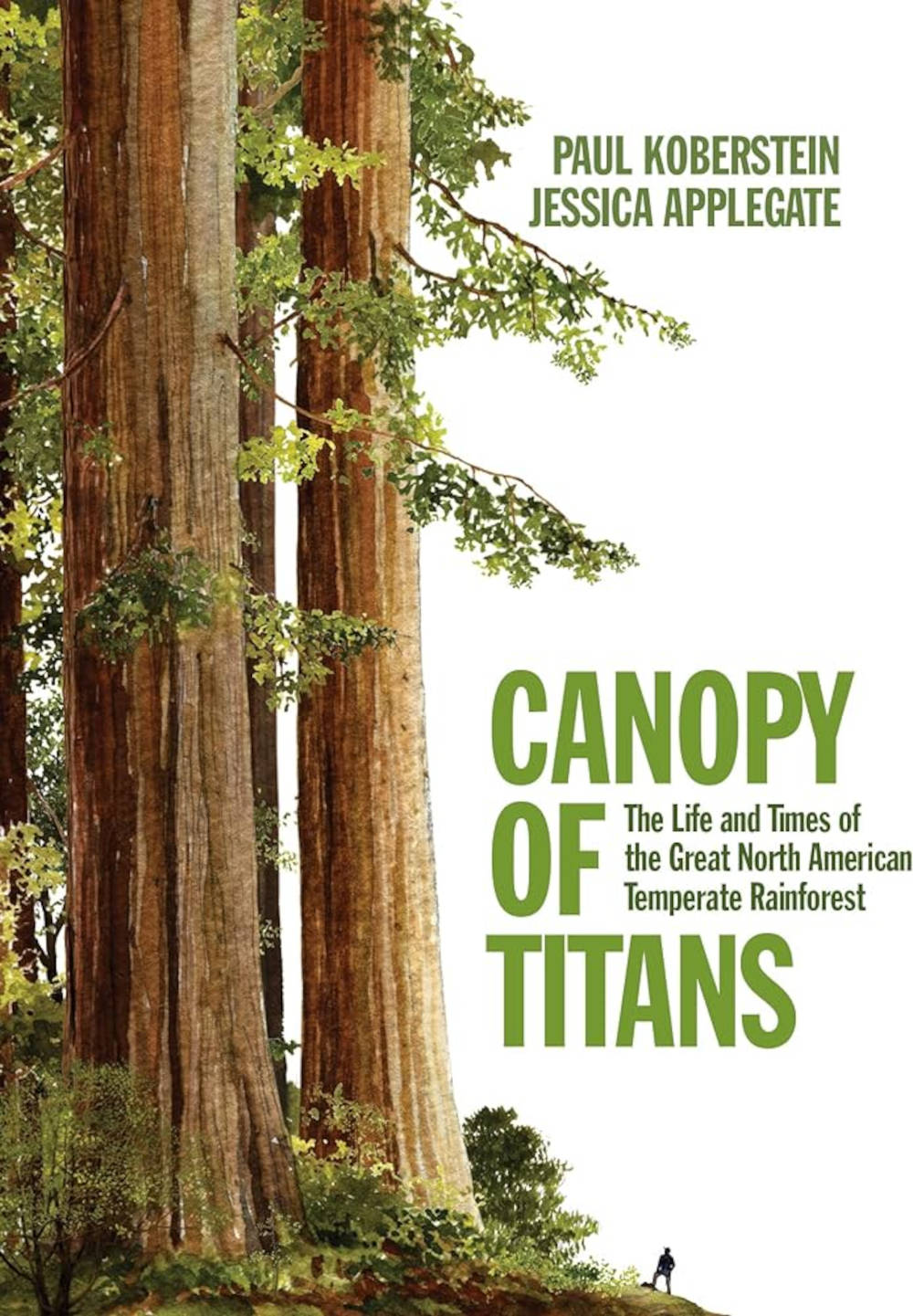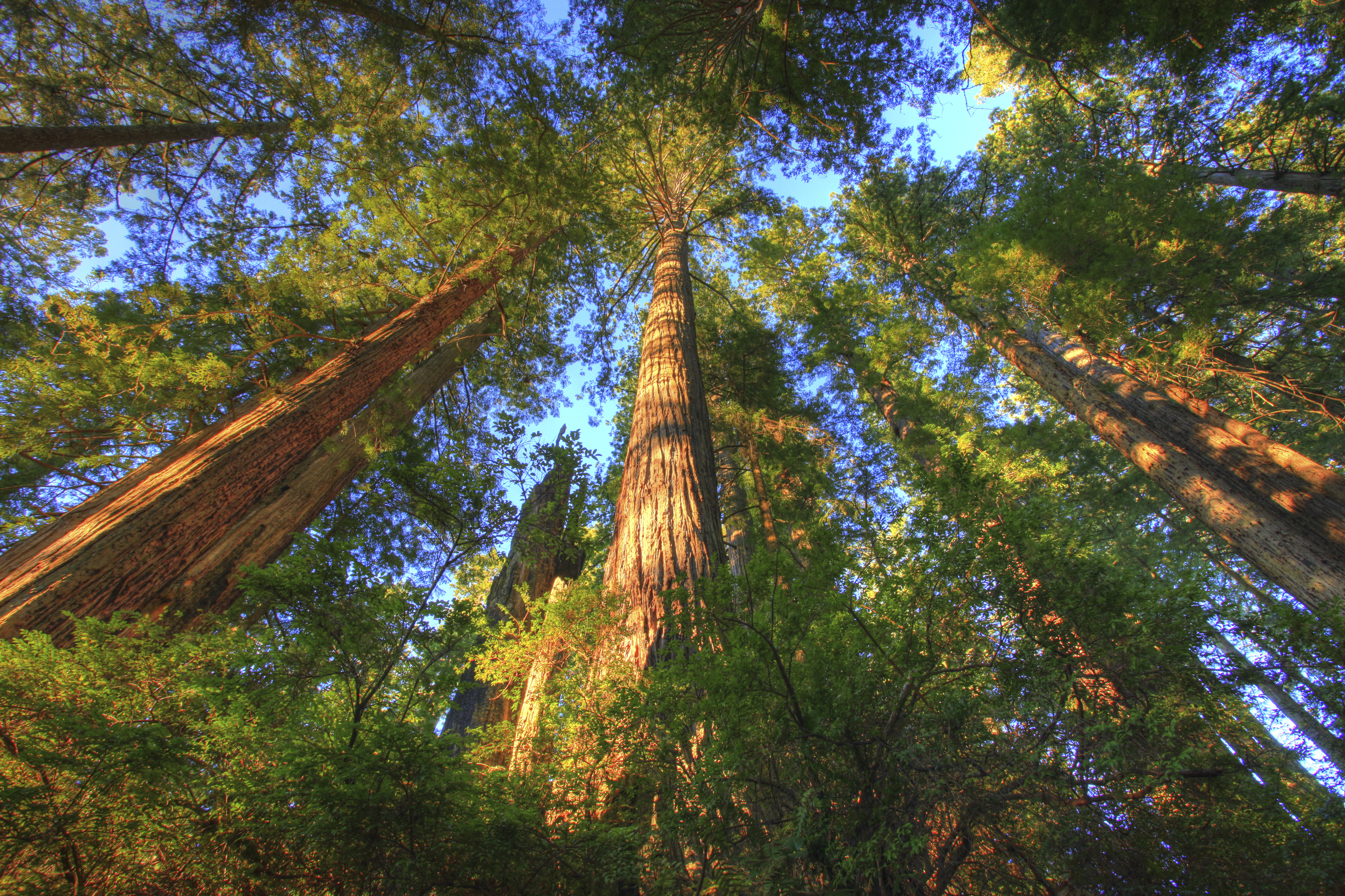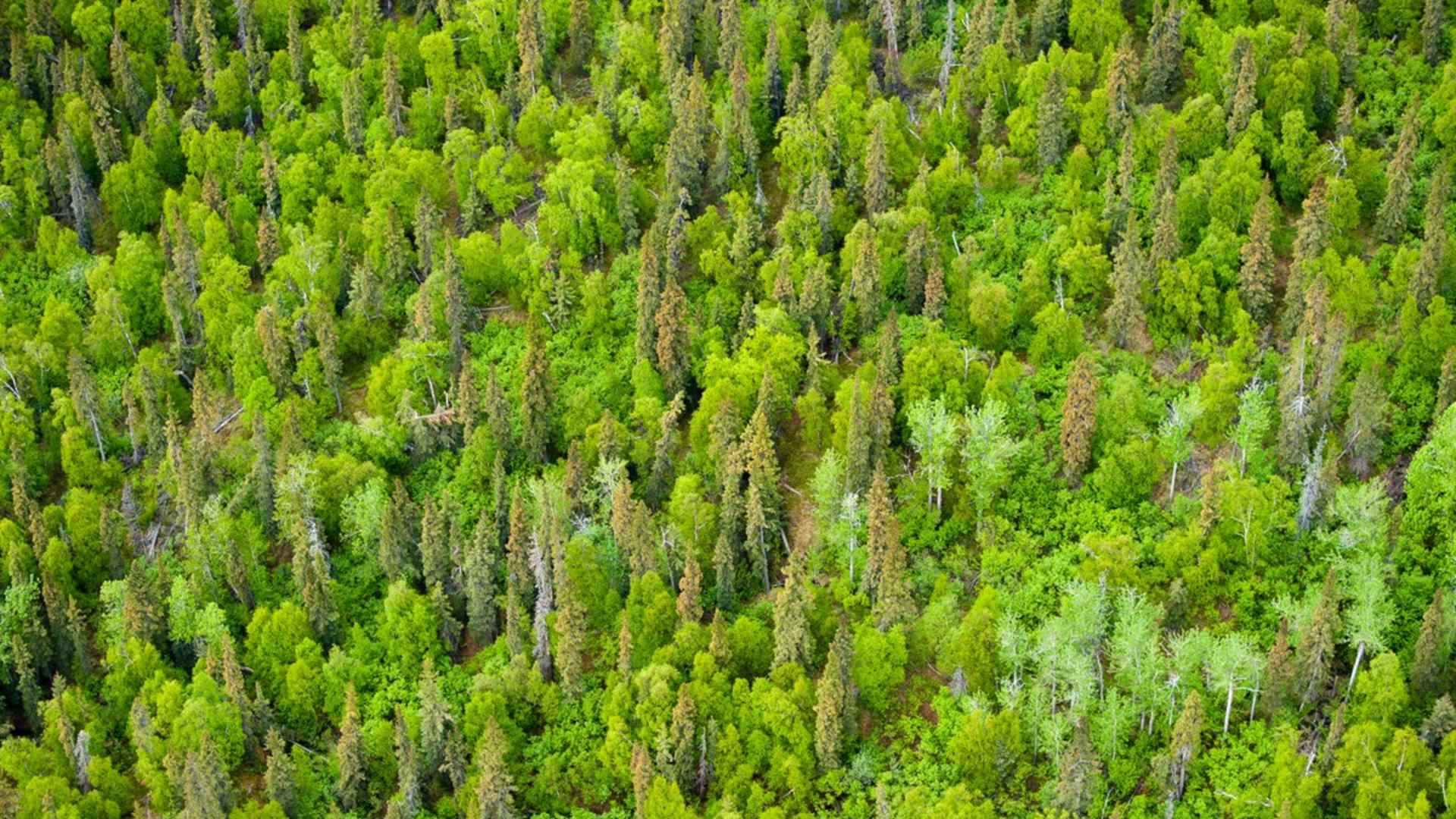When most people think of rainforests, they conjure up images of the Amazon, the Congo, and Southeast Asia — vast verdant expanses of densely packed forests, dripping with moisture and rich with tropical life. But in fact, there’s a huge rainforest in North America, unheralded and underappreciated: the sprawling forested region that stretches some 2,500 miles along the Pacific Coast, from just north of San Francisco to Kodiak Island, Alaska.
Part of the problem, according to Oregon journalists Paul Koberstein and Jessica Applegate, is that the area has no popular name. As a result, we’re missing the forest for the trees, and U.S. and Canadian policymakers and scientists are neglecting a valuable opportunity to marshal resources in their backyard to hit wider climate change targets and improve conservation.

BOOK REVIEW — “Canopy of Titans: The Life and Times of the Great North American Temperate Rainforest,” by Paul Koberstein and Jessica Applegate (OR Books, 354 pages).
Giving the Pacific rainforest “an inspiring name could significantly elevate its profile, a necessary first step toward granting it the international recognition it deserves as one of the world’s most vital carbon sinks, alongside the Amazon,” the authors argue in “Canopy of Titans: The Life and Times of the Great North American Temperate Rainforest.”
“At various times,” they note, “people have called the temperate rainforest Salmon Nation, the Rainforests of Home, Northeast Pacific coastal temperate rainforest, Pacific coastal temperate rainforest, Pacific Rain Forest, Cascadian Raincoast Forest, or the Northwest Coast Cultural Area. None of the names have stuck.”
The name Koberstein and Applegate ultimately land on — the Pacific coastal temperate rainforest — is one used by a small cadre of forest scientists, and while it may lack the associative power of the Amazon, it accurately reflects the region’s status as a unified ecosystem worthy of the same attention that tropical rainforests receive in the global effort to mitigate climate change.
With their huge expanses of tall trees and high levels of rainfall, rainforests are home to some of the world’s most diverse ecosystems and breathe in vast amounts of carbon dioxide from the atmosphere while producing oxygen through photosynthesis. For that reason, they’ve been called the lungs of the Earth. The Pacific Coast rainforest as a whole stores more carbon per unit area than any other forest in the world, and it represents more than one-third of remaining temperate rainforests worldwide, the authors write.
Drawing on research and interviews with more than a hundred scientists and other experts, Koberstein and Applegate, who run the environmental outlet Cascadia Times, make a persuasive case that the region deserves an elevated profile and that logging and pollution are threatening the rainforest’s ability to stabilize rising greenhouse gases. And the solution to prevent further degradation, they maintain, is not to plant more trees — or “carbon-capturing machines” — but rather to protect the oldest among them and prevent unsustainable logging.
To bolster their argument, the authors journey throughout the Pacific coastal region, building a detailed portrait of the forest and its constituent parts, its environmental value, and the various threats it faces. There are vivid accounts of California’s redwoods, Oregon’s wetlands, Washington’s colossal Douglas firs, British Columbia’s salmon runs, and Canada’s Great Bear Rainforest, which abuts Alaska’s Tongass National Forest. We learn, for example, that the Pacific rainforest houses three of the world’s seven species of trees that grow over 300 feet tall and that the roots of one of these, the coast redwood, may only reach 10 feet deep while its first branches can be 250 feet above them.
Along the way, the authors show how the Pacific rainforest has been profoundly altered by clear-cutting and pollution. Since Europeans began colonizing the Pacific Coast in the 19th century, the authors write, between 70 and 80 percent of the region’s old-growth forest has been cut down. In northern California and southern Oregon, old-growth redwood forests have been reduced to just 4 percent of their original territory.
Global efforts to plant trees, like the Great Green Wall across the Sahal region of Africa and Plant-for-the-Planet, which aims to plant a trillion trees worldwide, have fallen short of targets, and even trees that have been planted may not have survived. Instead of planting, the authors say we need policies that actively preserve old-growth forests — those with trees aged 175 years or older — because they trap much more carbon than younger forests, even those that are decades old.
Each acre in the Grove of Titans, a patch of redwoods in California’s Jedediah Smith State Park, stores six times more carbon than the same area in the Amazon, Koberstein and Applegate write. An ancient tree like the Queets Fir, a 221-foot-tall Douglas fir in Olympic National Park, can sequester as much carbon in a year as a midsized tree captures over its entire life, according to a USGS study. The authors use evidence like this to advance the idea that protecting old-growth forests is better for the climate than planting new trees.
Surprisingly, in Southeast Alaska, up to 70 percent of logged trees are left to rot due to imperfections that don’t sell well in the timber market, the authors write. But once a tree is cut down, the organic material starts decomposing, releasing the tree’s carbon into the atmosphere. In many regions, logging companies replace felled trees with tree farms, which are young trees planted densely in rows. While the companies call these forests, scientists interviewed by the authors doubt they can really be called forests: “They have more in common with cornfields,” they write, and sequester just one-fortieth the amount of carbon as a natural forest.
Koberstein and Applegate chronicle the efforts of both small timber companies and large ones, including Weyerhaeuser, the third-largest logger in the world and owner of the largest private tract of land in Oregon’s Coast Range. They also focus attention on industry associations, like the Oregon Forest and Industry Council, which they accuse of using the same tactics as tobacco and oil companies to spread misinformation about the impacts of deforestation.
The authors assert that there are logging methods that can ensure that carbon is sequestered while also harvesting timber. Proforestation, for example, prioritizes the protection of existing old-growth forests and ones that are soon maturing into old-growth, while delaying harvesting in younger forests.
The book also explores marine life within the coastal rainforest. Salmon are not only food for bears, eagles, and humans, but also feed orca far from the coast, and the nutrients they bring inland supply trees with vital nitrogen. One study suggested that trees grow three times more quickly if they’re near a salmon stream.
Koberstein and Applegate’s account draws on extensive interviews with researchers, activists, and the people who bridge both worlds, as well as companies’ public records. Scientists figure prominently, like William Moomaw, an environmental policy professor emeritus at Tufts University who coined the term proforestation. We hear from estuary expert Laura Brophy, who has helped raise the profile of Oregon’s forested wetlands, a kind of carbon sink similar to tropical mangrove forests.
We are also introduced to Carol Van Strum, who has fought for decades to stop the use of pesticides and other toxic chemicals in forests. And Terri Hansen, a Winnebago Tribe of Nebraska citizen, contributes a chapter on the resilience of several tribes to adapt to rising sea levels, to preserve traditional and preventative forest burning practices, and to pursue climate solutions that include carbon credits and harvesting food and medicine from forests. (Hansen, who reported on international climate meetings, climate impacts in Indigenous communities, and community solutions to reduce emissions, passed away shortly before the book was published.)
In this wide-ranging, deeply reported survey, Koberstein and Applegate succeed in turning attention northward from the tropics to the rainforests of the U.S. and Canada. In doing so, they put a spotlight on the threats to carbon sinks, to the officials and companies putting communities and climate at risk, and to the power of trees that we are only beginning to understand. “We now know the best time to plant a tree was a thousand years ago,” they conclude. “The best thing you can do today is save a tree.”
Ian Morse (@ianjmorse) investigates land and extractive businesses, reports on the natural sciences, and writes the Green Rocks newsletter. He is based in Seattle.












I look forward to reading the book and learning more about proforestation.